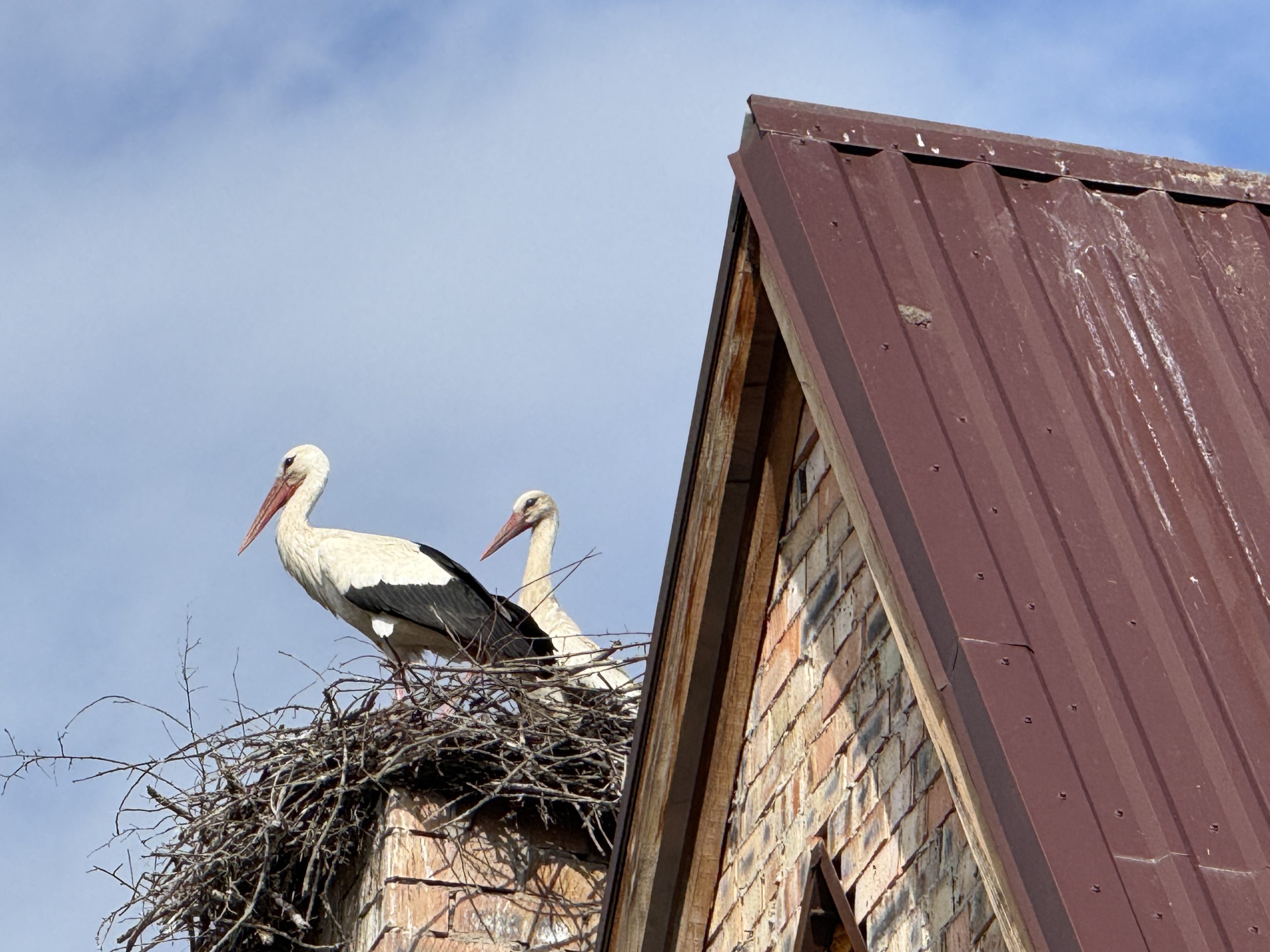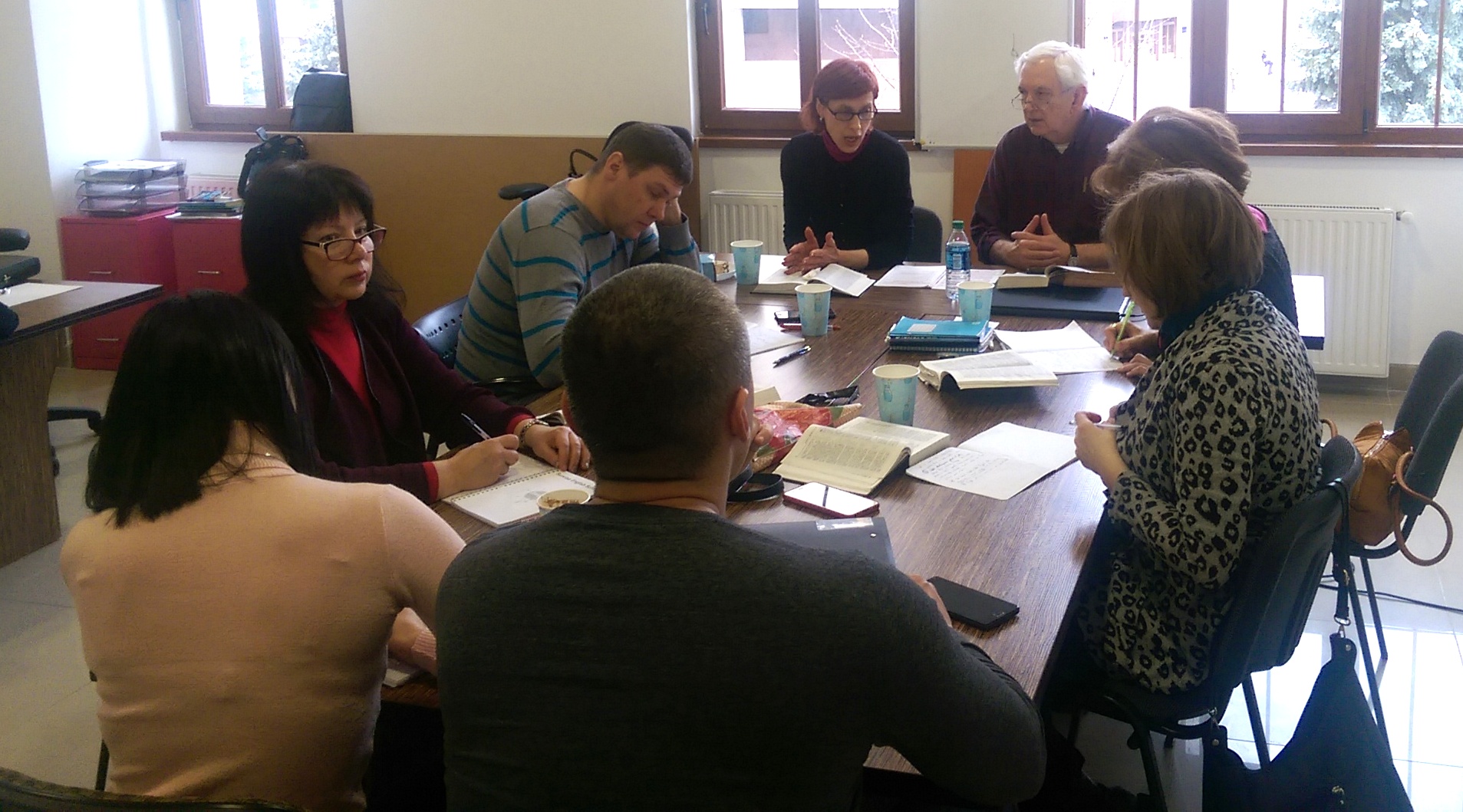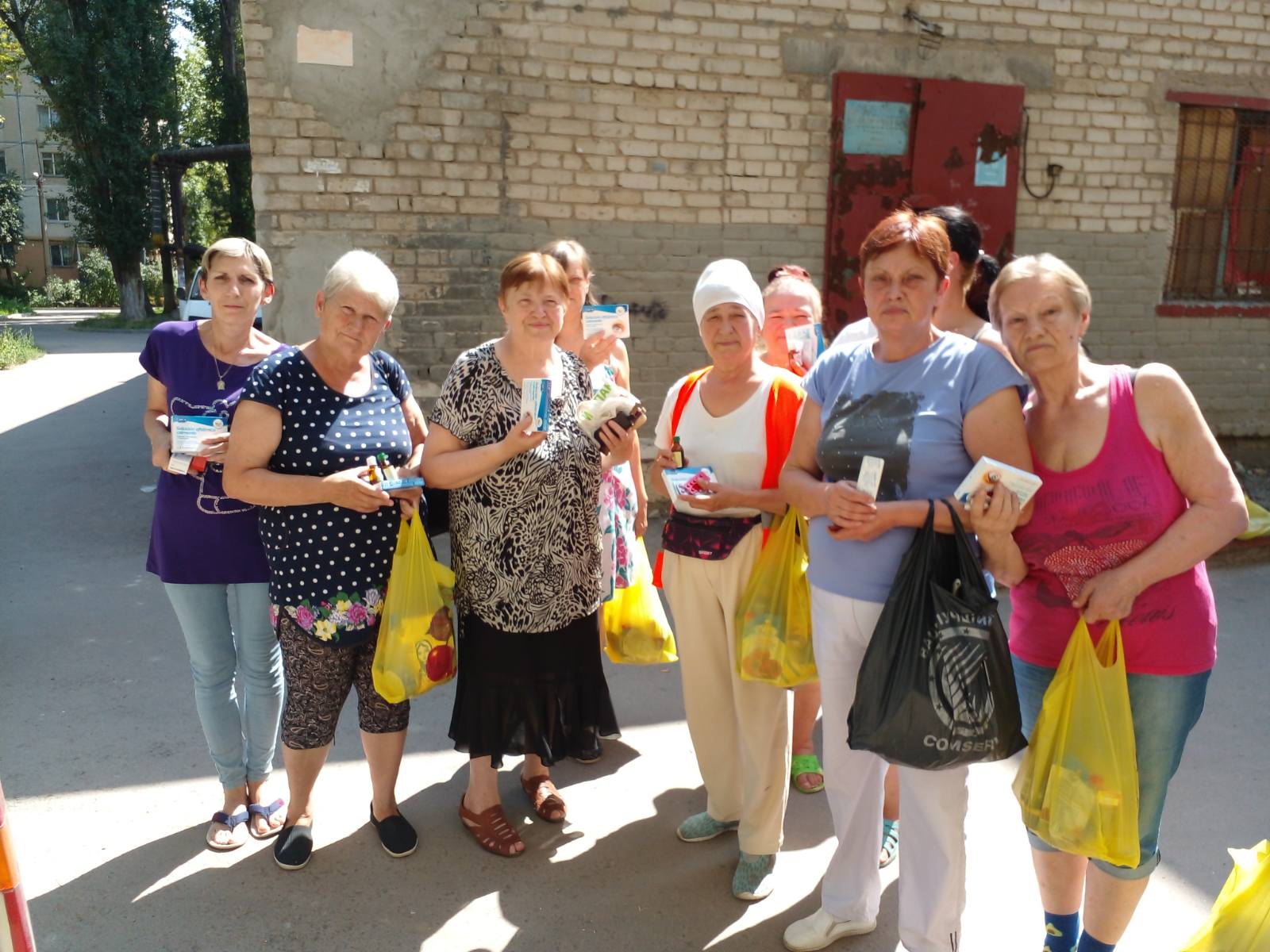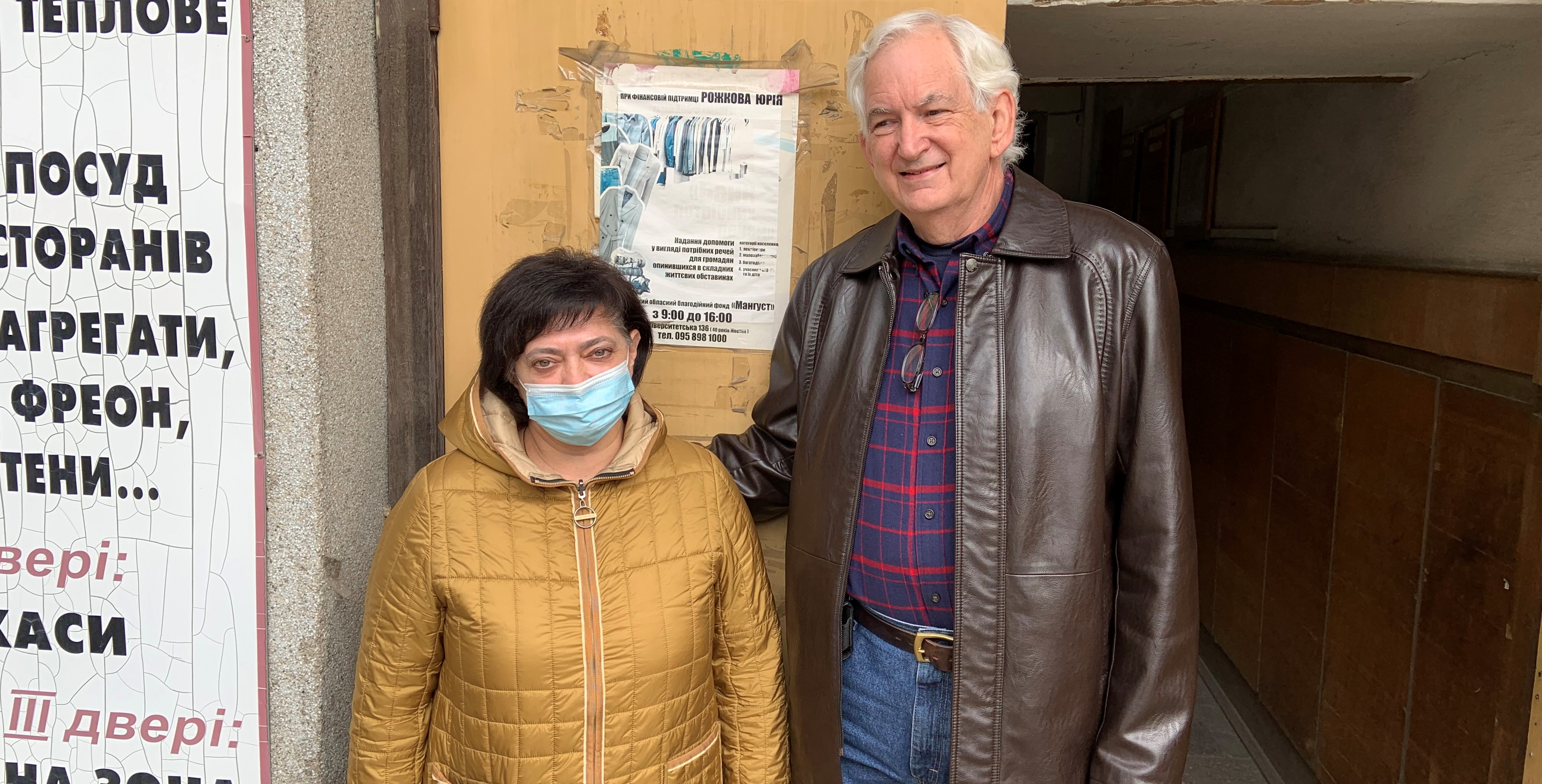
Feature Photo: Storks are bridling their nest atop of the Ivano-Frankivsk Church of Christ’s chimney!
Ukrainian folklore believes that family affection, well-being and prosperity would always reign in a house where the stork is settled and bridled its nest. Also, it was believed that this bird could bring babies to the house. Ukrainians devoted songs and fairy tales to storks. A large amount of Ukrainian culture is connected with this bird. Because of the national respect towards the bird, it became the winged “amulet” of the Ukrainian people.
I love the cultural sociological beliefs and practices in different nations (or as in the USA, in different Regions of the nation!). I have previously posted about storks but I wanted to revisit this because there are multiple storks that are now bridling their nests on top of the Ivano-Frankivsk Church of Christ (see photos). I hope you will find the folklore very interesting—as with ALL folklore you need to read it with a “grain of salt”! The following comes from a selection discussing the cultural folklore of Ukraine.
The Folklore Narrated
“Spring descends to earth from the wings of a stork, foreshadowing joy and happiness. Since ancient times, this bird has symbolized love for the father and mother, who have blessed this world. And therefore, it is a symbol of procreation, family well-being and love for the native land.
“The white stork is a migratory bird that lives in Europe, Africa and Asia. According to the studies of ornithologists on the territory of Ukraine, it appeared in the 16th-17th centuries. Since then, the bird that brings spring on its wings has become a living symbol of our country. Although the stork and the crane are two different birds, their symbolism among the people and their meaning in human life are the same due to their external similarity.
“Storks are considered holy birds because of their loyalty to man, because they have never harmed people. Our ancestors believed that birds are endowed with human souls, feel the human heart and understand speech. They are also renowned for their loyalty. If a stork chooses a mate, it is for life. When one of the couple dies, then the other consciously goes to certain death. And when betrayal happens in a bird family, the culprit is condemned by other birds and even punished by death.
“Ukrainian folklore is filled with a large number of sayings, signs, songs and poems about storks. In legends, they spoke with particular tenderness about their nobility. The stork was sung in historical songs and thoughts. His images were embodied on coats of arms, emblems of cities and ancient family estates. Archaeologists have found many clay figurines, toys, ornaments and painted utensils depicting these birds.
“Turning to folk signs, people believed that when someone sees a stork for the first time in spring, it means that they will soon be walking at a wedding. If you saw a whole flock – to replenishment in the family or meeting with relatives.
“According to other sources, seeing one stork promised a whole year of loneliness, and two – for an early meeting with their mate. If the girl saw a stork in the nest, it meant that she would spend another year in her father’s house.
“It was considered a good omen to see a stork during the flight. And watching stork dances was a harbinger of joy and good fortune. If they saw storks resting in a field, it was believed that this was a sign for a generous harvest.
“Also, according to the arrival of the birds, it was determined exactly when to expect warming. People believed that it was the storks who brought warmth and took it with them, flying south. So, if the birds arrived earlier, they were waiting for an early and warm summer. If the stork stood on one leg, they expected cold weather soon. Watching the birds, they noticed that before a strong wind was understood, storks circled near their nests for a long time. If you saw that they are busy in the nests – it’s time to plant onions.
“It was also believed that if a stork flies over a house in which there is a newborn, in a year there will be a replenishment of the family. A quick replenishment was also expected when a stork landed on the roof during a wedding or a married woman dreamed.
“Killing a stork was a great sin. The person who decided to do this, and his family, were waiting for misfortune or even death. This could be called misfortune for several generations. It was believed that the stork’s nest is a talisman against lightning and fire.
“It was forbidden to point fingers at the birds that were flying. It is believed that they could get lost from this. Also, people tried not to disturb the birds by accidentally meeting them. They were limited to short and quiet observation.
“According to the legends, these birds had more than one meaning. For example, when the birds flew south, after them they shouted ‘Road road!’ to return to their homeland as soon as possible. It was also believed that this phrase could delay their departure, and at the same time, frosts. The pitiful chirping of storks symbolized an incredible longing for their native land. Their singing did not leave anyone indifferent, the song was so sad. “Storks spend most of their time on the road. Poured into warmer climes in August-September, the stork only arrives in December in Africa, where they spend the winter. A month later, they are preparing to fly again, but already home. By the way, they return to their homeland twice as fast as they fly to foreign lands.
“A certain symbolism is also associated with the purpose of their autumn and spring flights. According to an ancient belief, birds fly away in autumn, taking the souls of the dead with them, accompanying them to the other world. In the spring, returning home, they accompany the souls of babies who are soon destined to be born.
“With their arrival and call, they announce a change in the natural cycle, coming joy, a carefree spring and a happy summer. That is why in the spring storks are called veseliki. People call them differently: crane, stork, bushel, buslik, chernoguz, gaister, veselik, long- haired and so on. Not a single bird in Ukraine, except this one, has so many local names.
“Sometimes they were given more unusual, as for birds, names. In general, animals and birds were never called human names. However, storks became an exception, they were addressed as people: ‘Anton, when will it be warm?’ or ‘Ivan, bring warmth!’”
Please continue praying for our efforts! Our request is the same as Paul’s in Colossians 4:3, “praying at the same time for us as well, that God will open up to us a door for the word, so that we may proclaim the mystery of Christ.”
John L. Kachelman, Jr, Ukraine Missions, Dalraida Church of Christ, P.O. Box 3085, Montgomery, AL 36109












You must be logged in to post a comment.